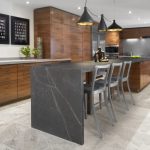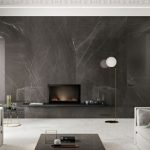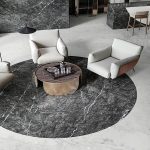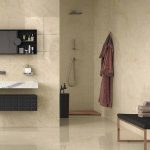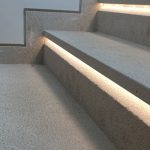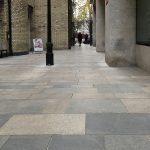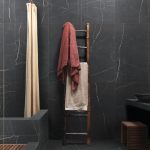Marble Cultural Associations and Origins, Advantages and Disadvantages
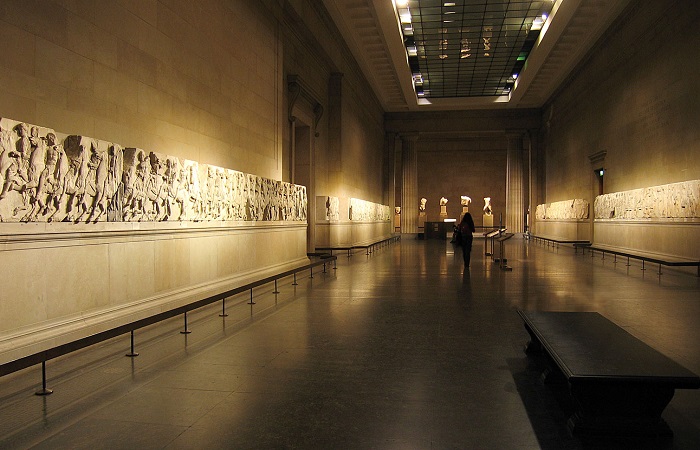
Marble Cultural Associations and Origins, Advantages and Disadvantages
Origins, advantages and disadvantages of marble will be discussed in the follows. Marble is a rock widely used in buildings, monuments, and sculptures. It consists chiefly of calcite or dolomite, or a combination of these carbonate minerals. Generally speaking, marble is a type of metamorphic rock formed from limestone. It is found in many countries, including Belgium, France, Great Britain, Greece, India, Italy, Iran and Spain.
Marble is formed from limestone by heat and pressure in the earth’s crust. These forces cause the limestone to change in texture and makeup. This process is called recrystallization. Fossilized materials in the limestone, along with its original carbonate minerals, recrystallize and form large, coarse grains of calcite. Impurities present in the limestone during recrystallization affect the mineral composition of the marble that forms.
The minerals that result from impurities give marble a wide variety of colors. The purest calcite marble is white. Marble containing hematite has a reddish color. A marble that has limonite is yellow, and marble with serpentine is green. Marble does not split easily into sheets of equal size and must be quarried carefully. The rock may shatter if explosives are used. Blocks of marble are quarried with channeling machines, which cut grooves and holes in the rock.
Marble Cultural Associations
As the favorite medium for Greek and Roman sculptors and architects, marble has become a cultural symbol of tradition and refined taste. In folklore, marble is associated with the astrological sign of Gemini. Pure white marble is a symbol of purity and immortality. It is also considered an insurer of success in education.
The extremely varied and colorful patterns of marble make it a favorite decorative material. These patterns are often imitated, such as in paper marbling, a technique for producing colorful swirls on paper. Faux marble or faux marbling is a wall-painting technique that imitates the color patterns of real marble. Marble patterns are also evident in backgrounds for computer displays.
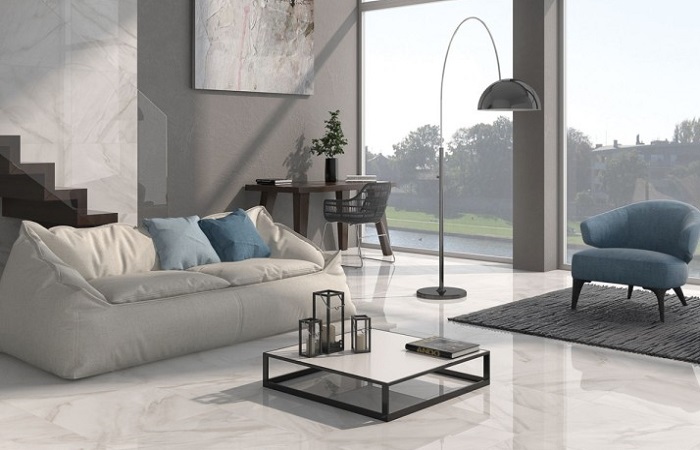
Origins of Marble
Marble is a metamorphic rock, resulting from the transformation metamorphism of sedimentary carbonate rocks either limestone composed mainly of the mineral calcite or dolomite rock composed mainly of the mineral dolomite. The metamorphic process, which takes place at high temperatures and pressures, causes a complete recrystallization of the original rock into an interlocking mosaic of calcite or dolomite crystals. Calcite consists of calcium carbonate, and dolomite, of calcium magnesium carbonate. The temperatures and pressures necessary to form marble usually destroy any fossils and sedimentary textures present in the original rock.
Pure white marble is the result of metamorphism of very pure limestone. The characteristic swirls and veins of many colored marble varieties are usually due to the presence of minor amounts of other minerals such as clay, silt, sand or iron oxides which were originally present as grains or layers in the limestone. These various mineral impurities were mobilized and recrystallized by the intense pressure and heat of the metamorphic process.
Advantages and Disadvantages
Let’s say among the commonly available stones, only marble has a slight surface translucency that is comparable to that of the human skin. This translucency gives a marble sculpture a visual depth beyond its surface, evoking a certain realism when used for figurative works. Marble also has the advantage that when first quarried, it is relatively soft and easy to work, refine, and polish. As the finished marble ages, it becomes harder and more durable.
In comparison with marble, limestone is cheaper but less translucent than marble. In addition, the fineness of marble’s grain enables the sculptor to render minute detail in a manner not always possible with limestone. Furthermore, marble is more weather resistant than limestone. The finest marbles for sculpture have few or no stains.
The skillful sculptor, however, can incorporate some stains into the sculpture. Marble does not bear handling well, as it will absorb skin oils when touched, producing stains ranging from yellow to brown. While more resistant than limestone, marble is susceptible to attack by weak acids and performs poorly in outdoor environments subject to acid rain. For severe environments, granite is a more lasting material but one that is far more difficult to work and less suitable for refined works. Compared to metals such as bronze, marble lacks ductility and strength, requiring special structural considerations when planning a sculpture.
To learn more about us, click here.
Send your price quotes directly to our WhatsApp through this Link: https://wa.link/ord5k8
Sources
https://www.newworldencyclopedia.org/entry/Marble
https://cmpstone.com.au/what-are-the-characteristics-of-marble/
- Back To Articles
- ancient sculptures, armani grey, armani grey marble, armany grey, bulgari grey, bulgarian marble, grey Armany, lashotor marble, marble, marble advantages, marble art, marble blocks, Marble Cultural Associations, marble decoration, marble design, marble disadvantages, marble factory, marble flooring, marble industry, marble interior design, marble interir design, marble merits, marble metamorphism, marble origin, marble quarry, marble rocks, marble sculptures, marble slabs, marble tiles, marble walls, petro grey, Pietra Grey Marble, Pietra Grey Marble Tiles
Article
Natural Stone Applications
- 22 December 2022
Iranian Stones Introduction According to Source and Quarry
- 21 December 2022
Technical Stone Introduction and Quarrying Procedures
- 21 December 2022
Categories
- blog757
- news1
- Specialized articles756

